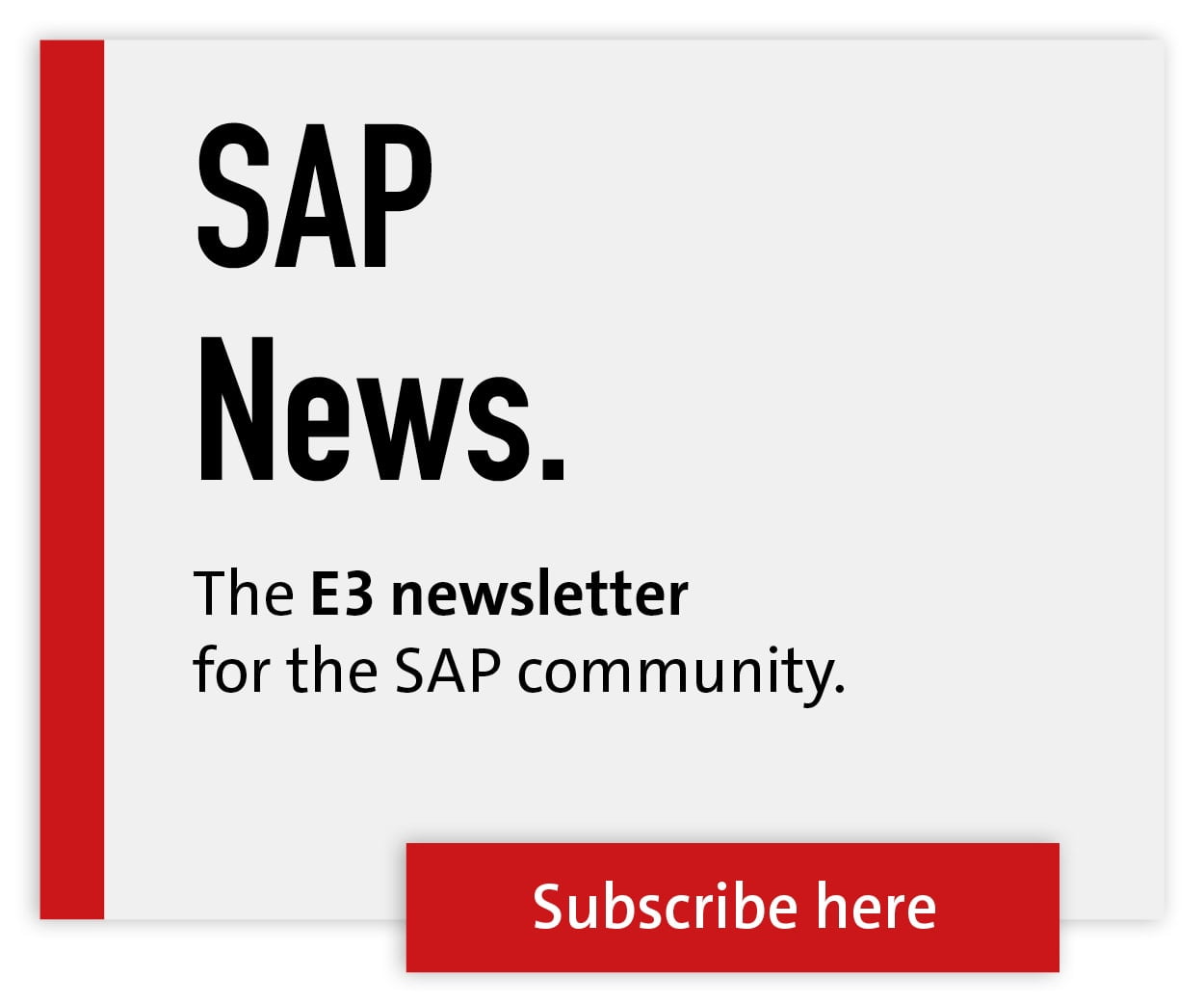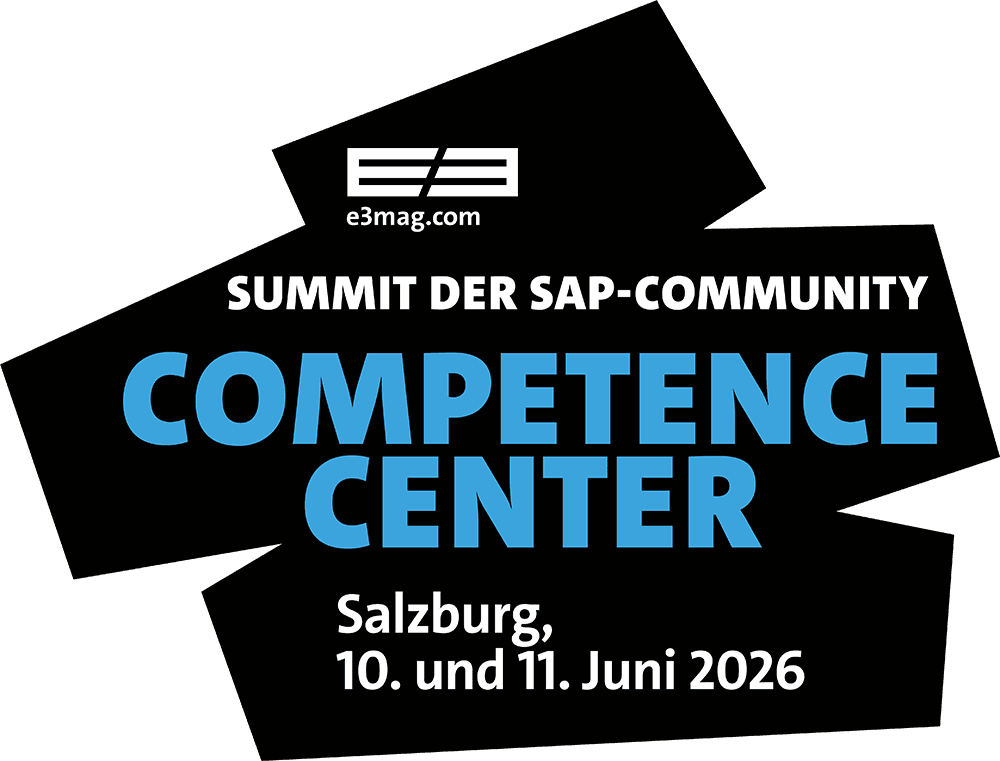How SAP customers are mastering the path to the hybrid cloud with SUSE
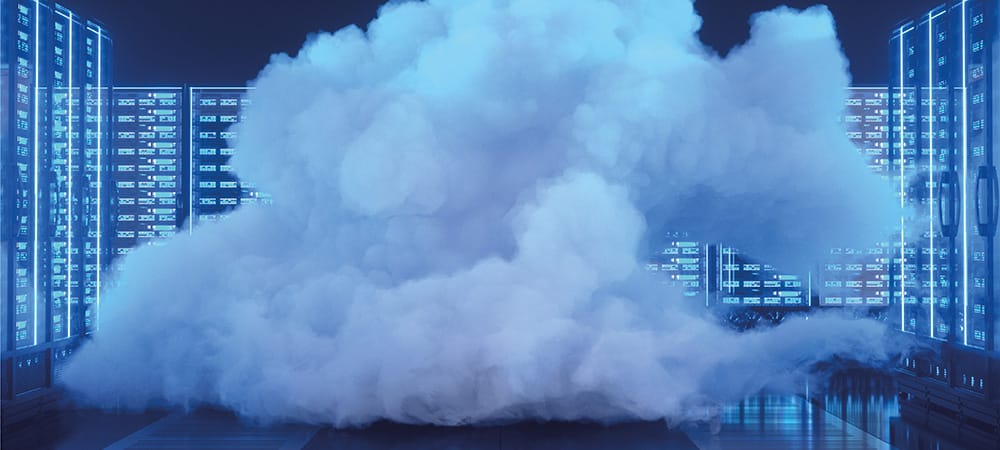
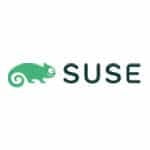
The motto of the DSAG Annual Congress 2025, "The Art of Balance", gets to the heart of this situation. It is about much more than technology decisions - it is about strategic decisions that will significantly determine the course of companies in the coming years. SAP customers are faced with the task of finding the right balance - on several levels at the same time:
- between public cloud and on-premises infrastructures
- between existing investments and new offers
- between classic SAP stacks and cloud-native technologies
- between standardization and individual requirements
- between reliable operation and more speed in innovation.
The latest edition of the DSAG Investment Report underlines how great the need for guidance is. Many existing SAP customers want more clarity on how the transformation to S/4HANA, cloud and AI can succeed - without creating new dependencies or jeopardizing established processes.
The hybrid cloud is the right approach for many companies in this situation. It allows the use of new functions and architectures - for example via the SAP Business Technology Platform - and at the same time the continued operation of business-critical systems under their own conditions. But even this approach is not a sure-fire success. If you want to set the course with foresight today, you need to know and evaluate technological options and transform them into an operating model that is sustainable in the long term.
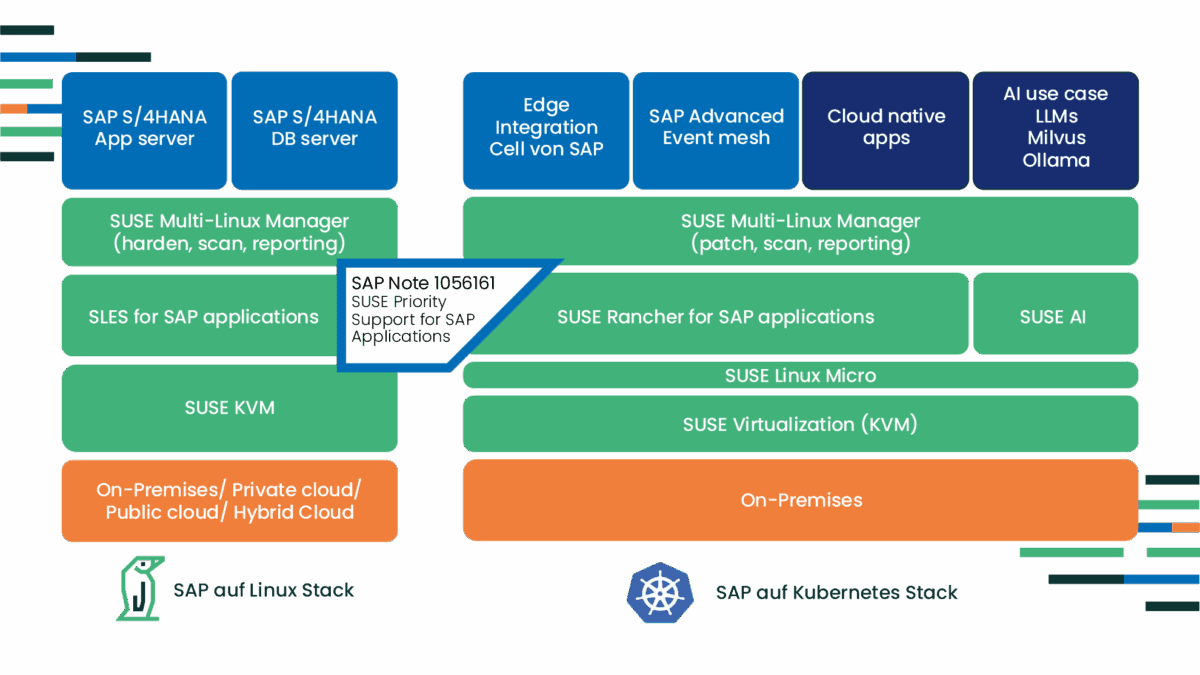
From virtual server to Kubernetes cluster
SAP landscapes are increasingly moving between two technological worlds. On the one hand, there are highly individualized ERP systems and databases that traditionally run on Linux-based, virtualized infrastructures. On the other hand, containerized applications are gaining in importance - for example, extensions to the SAP Business Technology Platform or edge-related services such as the SAP Edge Integration Cell. In future, many companies will combine both: established on-premises workloads and flexible cloud-native services. This hybrid operation requires platforms that support both worlds. This is exactly where SUSE comes in as a long-standing technology partner of SAP - with a comprehensive solution portfolio for the classic SAP stack and modern Kubernetes architectures.
Traditional SAP systems have been able to run stably and securely with SUSE Linux Enterprise Server for SAP applications for many years. The platform is certified for SAP and offers numerous enterprise functions - including live patching, the High Availability Extension and centralized management via the SUSE Multi-Linux Manager. Around 80 percent of all SAP HANA installations today run on SUSE Linux Enterprise Server for SAP applications - and SAP itself also operates the SAP S/4HANA Cloud offering on the SUSE operating system.
For containerized SAP components such as the Edge Integration Cell, SUSE now offers SUSE Rancher for SAP applications, a Kubernetes platform that is specially tailored to the requirements of these applications. It combines a validated Kubernetes stack with best practices for productive operation. The solution is complemented by SUSE Linux Micro as a lean runtime platform as well as solutions for security, observability and virtualization. Both technology stacks can be combined in hybrid scenarios - without being tied to a specific infrastructure.
Companies retain full control over data, technology and operations and can evolve their SAP landscape at their own pace. SUSE helps them to securely manage this transformation process, ensure the availability of critical services in any situation and increase operational efficiency through automation.
Comprehensive protection for data, applications and processes
The requirements for security in SAP environments have increased significantly in recent years - and not just due to legal requirements such as GDPR, NIS-2 or industry-specific compliance guidelines. The increasing integration of cloud services, new interface models and AI applications are increasing the potential attack surface. Data flows are becoming more complex and dynamic, making them more difficult to control.
Especially in hybrid SAP environments, it is therefore important to consider security not as an add-on, but as an integral part of the platform architecture. SUSE Linux Enterprise Server for SAP applications is designed for precisely this use. With Common Criteria EAL4+ certification from the BSI, integrated live patching for performing security-critical updates without restarting the system and specific hardening and audit functions, the operating system forms the basis for compliance-compliant SAP operations.
In combination with the SUSE Multi-Linux Manager, security policies can also be managed centrally, patches rolled out automatically and vulnerabilities systematically identified - an important prerequisite for achieving a high level of security with reasonable effort. Anyone running containerized SAP applications such as the Edge Integration Cell also needs a solution that protects the entire container lifecycle from potential threats.
The SAP-validated SUSE Rancher for SAP applications platform addresses this challenge.
It comes with integrated tools for access control, network segmentation, supply chain protection and runtime security - including the integration of the container security solution SUSE Security. Together with SAP, SUSE has developed a certified reference architecture specifically for the Edge Integration Cell. This ensures that containerized integration workloads run stably, securely and traceably - for example in production environments with real-time requirements or when processing sensitive data that must remain local.
Secure SAP operation in practice at UMB
UMB AG, an IT service provider and SAP hosting partner from Switzerland, shows what secure SAP operation with SUSE looks like in reality. The Linux/UNIX team there operates SAP systems for numerous customers on an IBM Power platform - secured by SLES for SAP applications in combination with SUSE Multi-Linux Manager. UMB thus guarantees the integrity and compliance of sensitive SAP environments through a tested secure software supply chain and Common Criteria-certified components.
At the same time, SUSE simplifies the audit-proof management of complex SAP landscapes across multiple clients. "SUSE helps us to survive in highly regulated industries such as finance and pharmaceuticals," says Alfred Vockinger, Head of Linux/UNIX at UMB. "The company's sophisticated security strategy makes our work much easier." The high degree of automation also ensures that UMB can implement industry-specific compliance requirements more efficiently.
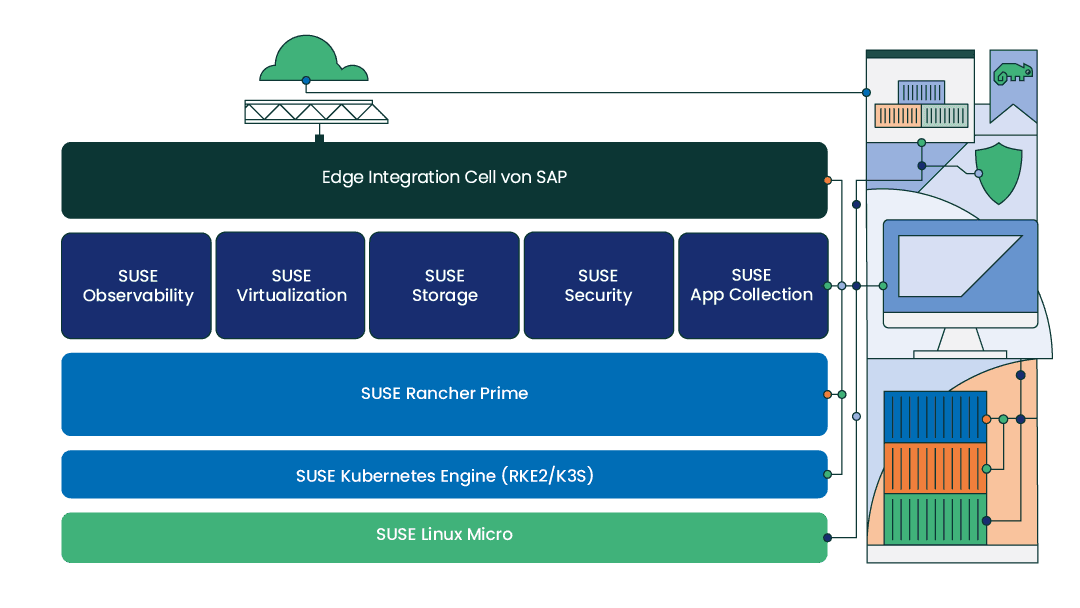
High availability: ensuring continuity in times of change
In a hybrid SAP world, however, high availability means more than just classic reliability. Because where data and applications are distributed across different environments - from the data center to the edge to the cloud - the number of potential sources of error also increases. At the same time, the requirements are increasing: Many processes run in real time, integrations are more complex and maintenance windows are becoming ever shorter.
For SAP customers, this means that high availability must be systematically planned, technologically supported and implemented close to operations - across system boundaries. In on-premises or private cloud environments, many existing SAP customers rely on proven mechanisms such as clustering, automatic failover and replication. SUSE Linux Enterprise Server for SAP applications provides the necessary technologies for this - in particular through the High Availability Extension, which is based on Pacemaker and enables continuous operation of business-critical SAP components such as HANA databases.
Maintenance-related downtimes can also be minimized through live patching. In combination with SUSE Multi-Linux Manager, IT teams can also ensure that all systems are consistently configured and orchestrated in a fail-safe manner - even in hybrid environments.
Fail-safe Kubernetes environments for SAP
With the switch to containerized SAP components - such as Event Mesh, EIC or AI-supported extensions - the high-availability concept shifts to the Kubernetes level. The SUSE Rancher for SAP applications platform supports multi-node clusters, automatic recovery mechanisms and flexible load balancing. This means that resilient architectures can also be set up in container environments that are distributed across multiple locations or clouds - including self-healing and dynamic scaling. This means that high availability can also be practically implemented for modern, modular SAP workloads.
One example of a consistent availability strategy is provided by the Swiss agricultural cooperative fenaco. Together with SUSE, the internal IT service provider BISON has implemented a consistently automated and fail-safe SAP operating approach. The basis is a standardized platform with SUSE Linux Enterprise for SAP applications, SUSE Multi-Linux Manager and SUSE Linux Enterprise Live Patching, which runs reliably even under high load. Especially in the logistics sector - where responsive systems are required at all times - the ability to install security updates without rebooting is of central importance. This enables fenaco not only to improve reliability, but also to streamline maintenance processes.
"SUSE Linux Enterprise Live Patching is a real game changer for us," emphasizes Marco Sudan, Service Owner SAP at BISON. "We used to have to restart the servers every time a security update was released. As a result, SAP systems for production and logistics processes were often unavailable for an hour or longer. Today, we can close security gaps immediately while business operations continue uninterrupted."
Automation: mastering complexity, increasing efficiency
Operating modern SAP landscapes is demanding. Numerous systems, strict compliance requirements, regular updates and high availability requirements are causing an ever-increasing operational effort. At the same time, specialist departments expect more agility and faster provision of new services. This equation can hardly be solved without automation. The need for consistent and reliably reproducible processes is increasing, especially in hybrid operations. Automation is therefore the key to ensuring scalability, efficiency and governance at the same time.
In the classic SAP environment, the SUSE Multi-Linux Manager plays a central role in the automation of patch management, configuration control and system monitoring. In combination with tools such as Salt, Terraform or Ansible, SAP systems can be almost completely mapped as code and processes from deployment and lifecycle management to compliance checks can be automated. Especially in larger SAP landscapes with multiple clients or system types, this significantly reduces the workload of SAP teams.
Automation is also fundamental in containerized SAP architectures. SUSE Rancher for SAP applications allows Kubernetes clusters and SAP-related workloads to be managed end-to-end via declarative APIs and GitOps principles. Policies, resources, networks and security rules can be centrally defined and automatically enforced. For DevOps-oriented SAP development and operations teams, this means faster onboarding of new services, less manual configuration and consistent operation, even across distributed environments.
Innovation: Ready for new developments with SUSE
Innovation does not start with a new tool, but with the ability to make change structurally possible. SAP customers must therefore create technological foundations on which new business models, AI-supported processes or flexible extensions can be implemented in a sustainable and secure manner.
With the growing interest in generative AI and machine learning, there is an increasing need for integration models that fit into SAP environments without jeopardizing data sovereignty and compliance. SUSE has developed SUSE AI, a Kubernetes-based platform for the development and secure operation of custom AI applications, to meet precisely this requirement. Companies can use large language models (LLMs) such as Llama or Mistral locally or hybrid - embedded in existing SAP processes, but independent of external AI clouds.
This approach is an important differentiator, especially in regulated industries: innovation is possible without sensitive data leaving the company. The FIS Group shows how SAP-related innovations can be implemented in a controlled and future-proof manner. The SAP Gold Partner has been developing individual software solutions for SAP users based on machine learning and AI for years. To achieve maximum flexibility, efficiency and security in the operation of AI applications, the FIS Group decided to use SUSE AI.
he open infrastructure platform from SUSE supports the rapid development, secure execution and seamless scaling of AI workloads - both on-premises and in the cloud. "A major advantage of SUSE AI is that it allows us to significantly reduce the complexity of running AI workloads," explains Manuel Sammeth, Managing Director of FIS-ASP and head of the AI competence team within the FIS Group. "For example, we can manage different large language models via a central platform and implement new models for our customers very quickly if required. The integrated tools for orchestration, monitoring and lifecycle management in SUSE AI save us a lot of manual effort - this significantly accelerates the development time of innovative AI applications."
Conclusion: The right balance for the future of SAP
Hybrid SAP architectures are not a compromise, but a strategic decision. The challenge is to maintain a balance: between on-prem and cloud, between control and agility, between stability and innovation. SUSE supports companies on this path with open, secure and certified solutions for classic and cloud-native technology stacks. SAP managers can master the balancing act and implement the hybrid cloud strategy that best suits their current and future requirements.
Continue to the partner entry:

